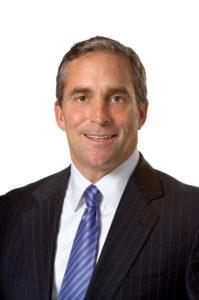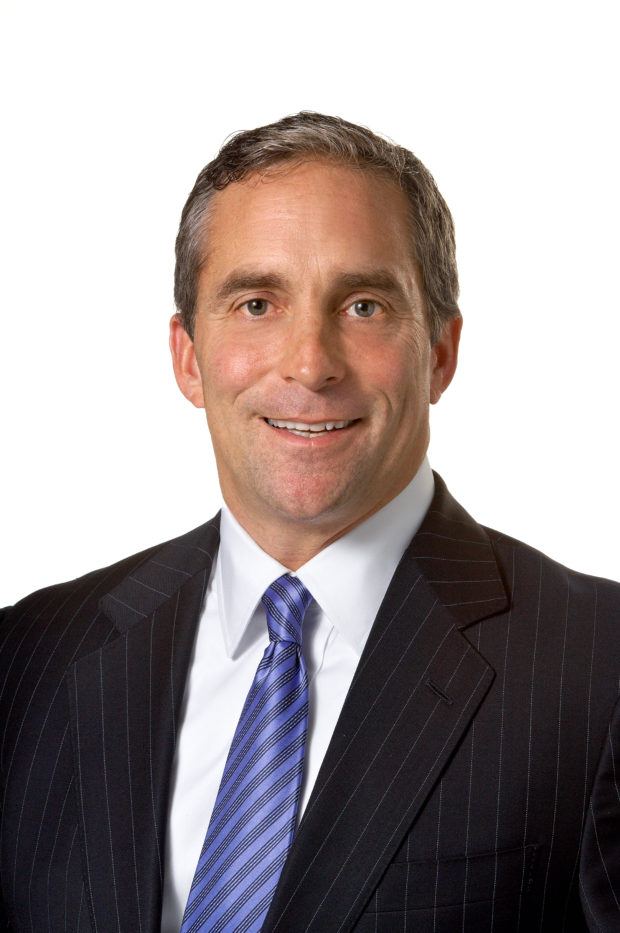Against a backdrop of excess capital, low interest rates, increasing broker leverage and decelerating insurance price hikes, carrier management teams are zeroing in on expenses to squeeze out some profits, an executive said here.
Executive Summary
Carrier management teams are evaluating their costs and trying to adjust their infrastructures to squeeze out some profit, Endurance Insurance’s Douglas Worman said at the recent IACP conference. He also said carriers need to rethink their hiring practices or risk shackling innovation.“We’re all evaluating our cost basis, trying to understand our infrastructure and to adjust that infrastructure, because right now the cost basis from the insurance underwriting side is unsustainable [over the] long term. It just won’t work,” said Douglas Worman, chief executive officer of U.S. Insurance for Endurance Insurance.
Worman gave the assessment during a presentation at the U.S. Regional Conference of the International Association of Claim Professionals in early June, where he also discussed the need for carriers to break from the same old hiring processes to attract new talent from other industries to inject new viewpoints and experiences into tired business models.
After reviewing some recent history—including a wave of industry startups after the 9/11 attacks and the dispersion of talent from insurers impacted by the financial crisis in 2008 to that earlier wave of insurers and others—Worman said an abundance of insurance options for customers served to drive pricing down and gave brokers greater leverage.
“In 2016 and beyond, what we see is disruption. And disruption is opportunity for those who are willing to take advantage of it,” said Worman, explaining that disruption is arising from M&A activity among some carriers, while others are “losing credibility” and vision.

Giving the big picture for all carriers, he said: “Management teams [are] being forced to look at the evolution of where the business is going so they can achieve a solid return for shareholders. Right now that’s being challenged.”
Worman, who started his insurance career at American International Group and held senior executive positions at Alterra Capital before signing on at Endurance in 2013, attempted to give IACP conference attendees “a true appreciation of what everybody’s [up] against” today, listing these factors contributing to a negative backdrop for the business:
- Low interest rates.
- Excess capital.
- Continued insurance price deceleration.
- Continued consolidation in the broker community, adding more leverage on the distribution side.
“At Endurance, we continue to focus on underwriting. The loss ratio is the most important thing which will drive underwriting results,” Worman said. “But if you look at the expense ratio, that’s going to become increasingly more and more important,” especially because there are limited income benefits coming on the asset side of the balance sheet, he said.
“If you can gain 200, 300, 400 basis points from an expense standpoint, [then] from an efficiency standpoint, you’re going to end up being a winner,” he said, describing the go-forward vision that insurance executives are creating.
“Business as usual, waiting for the market to come back—I don’t see it. I don’t think that’s sustainable,” he said.
Reserve Redundancies Masking Bloated Costs
Ignoring the reserving benefits, the fixed costs related to all the infrastructure that carriers built is becoming a bigger proportion of every dollar brought in.
“What does that mean from an operations standpoint?
“That means it’s going to cut into innovation. That means it’s going to cut into claims capability,” Worman said, addressing an area of particular interest to the claims professionals in attendance.
“That means it’s going to cut into creativity. Quite honestly, what it means is inferior products and inferior services to the client,” he said.
Combined ratios that are north of the mid-90s without reserve benefits factored in aren’t going to get carriers the returns on capital they need, he said. “You need to have a competitive expense basis going forward. That’s what everyone is focused on. They’re trying to figure out how to bring technology and efficiency together.”
Brokers’ Cut Too Big?
On the variable cost side, Worman said increased broker leverage is another challenge that carriers face.
“Do I openly say that brokers get too big a percentage of the trade? Absolutely. But it’s the world we live in, so you have to manage to that…” he said, adding, however, that he expects alternative capital providers to force changes in broker business models over time.
“That alternative capital is not all just capacity…They see inefficiencies, and they’re trying to figure out how to bring that together for thebuyer—the underwriting client.”
Bottom line: “Whether you think [acquisition costs] are high or low, there are ways you can manage through it [with] different business models. Different companies choose different strategies. Some will go wholesale only on certain products; some will sell retail and wholesale; and some will choose retail only.”
Managements have work to do in sorting through the cost-benefit tradeoffs, he said.
Retreading Wars Stall Innovation
In addition to the fixed costs of too much infrastructure across the industry, Worman said “retreading wars” in the talent market are also shackling innovation.
“You have teams jumping from company to company, literally changing uniforms. They may have been at three companies prior with the exact same boilerplate and the exact same results. So I don’t know why anybody would expect anything different.”
There is “no new innovation,” he said, emphasizing the need for the insurance industry to bring in new talent with different experiences, different views and different cultures—specifically college graduates. If we don’t, [then] how are we going to understand what the buyer’s perspective is down the road?” he asked.
Shifting Sands and Balancing Acts
Worman reviewed current market dynamics, highlighting opportunities for newer markets to take advantage of disruption of traditional legacy markets. “These newer markets are getting more submissions, different looks, on clients they would have never seen” in the past.
Defining disruption, Worman said it’s not just about consequences of M&A activity. For some carriers, “there are credibility issues. There are execution issues. There are business plan issues. There are relationship issues.”
Describing the opportunity this presents, he said: “If you have the right staff that can bring their creativity and knowledge and efficiency together, [then] you can give a client and broker the right solution. It doesn’t matter anymore if you were around 25 years ago.
“They’re looking for a solution. These changes are happening in real time,” he said.
Giving the example of directors and officers insurance for companies involved in IPOs, he said there were three carriers that had a legitimate shot to write the primary layer a decade ago. “Everyone has an opportunity now. That’s a sign of the times.”
“There are a lot of shifting sands,” he said at one point later during the presentation.
“You’re seeing books of business grow—big chunks of business going out to market that you never saw out in the market before. That’s all [the result of] brokers, clients not understanding the business models of some of their old legacy players—where they’re going and what they’re doing. They’re looking for solutions. They’re looking for firms that have the technology, that are creating efficiencies so they know they’re going to have more dollars [reserved] ultimately to pay their claims,” he said.
But Worman also sees opportunity to edge out carriers that stray too far over the side of technology and efficiency as they tackle the array of challenges he outlined.
“You’re going to see models try to create efficiencies, and they’re going to say, ‘We’re data-driven…We’re going to try to black-box some of this.”
But while some segments of business can be black-boxed with predictive analytics and less touches, that’s not universally true, he said. “You have clients and brokers out there that just don’t want to see that,” he said, suggesting that carriers can distinguish themselves on how they add predictive analytics to underwriting models and how much they rely on the black boxes.
“If two [client] companies look exactly the same, you can’t black-box pricing because you don’t know what end product they want,” he said, also offering this as a reason that online platforms cannot replace brokers everywhere. “There’s a lot of expertise that’s brought to the transaction by brokers,” he said.
Suggesting the right mix of science and expertise for carriers, he said: “Where you can use technology and predictive analytics, you use it as a tool [to] figure out where your appetites are and what business you want to write. But then you need to have underwriting talent to make the decisions that don’t fall within that black box—to negotiate something that is beneficial to the client” and to the broker and carrier.
“When you start to see everyone jump all the way to one side—when everyone is over here saying, ‘We’re science,’ that’s when you start to see opportunity,” he said.
Anecdotally, he noted that carriers with “We’re Science” mantras aren’t immune to external market forces. Even though a science-driven model might generate a price quote of $10, they are still quite easily swayed to drop down to $9 in a competitive environment, he said, providing an example.
“There are dynamics there that are creating frustration for distribution, which helps carriers who are combining technology with efficiency, with capital, with underwriting talent,” Worman said.





















 Viewpoint: Risks for D&O Insurers Exploring the New Frontier of Gen AI
Viewpoint: Risks for D&O Insurers Exploring the New Frontier of Gen AI  Allstate’s Safe Driving App Helps Reduce Chance of Collision by 25%
Allstate’s Safe Driving App Helps Reduce Chance of Collision by 25%  Florida Gets 8 New P/C Carriers After Insurance Market Reforms
Florida Gets 8 New P/C Carriers After Insurance Market Reforms  Travelers: Distracted Driving Incidents Continue to Rise
Travelers: Distracted Driving Incidents Continue to Rise 


